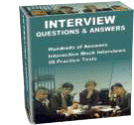Discrete Filter Notes (PDF 36p)
The objective of this section will be to show how to use the first- and second-order filters to achieve higher order filters. We shall also introduce a general, second-order stage called the biquad.
Discrete Filter Notes (PDF 30p)
The other approach uses a ladder configuration and is presented in this section. Both approaches are used to design successful higher-order active filters. The cascade approach is easier to design and tune but does not have the insensitivity to component variation found in the ladder approach.
Fundamental IC Noise paper (PDF)
Most people find the subject of noise mysterious, and there is, under- standably, much confusion about it. Although the fundamental physical concepts behind noise are simple. much of this simplicity is often obscured by the mathematics invoked to compute expressions for the noise.
Filter Design Guide
An active filter contains an amplifier whose output is connected to its input through passive components, usually capacitors and resistors. This feedback of the output to the input allows us to build filters with imaginary poles using capacitors and resistors alone. Without feedback, a filter with imaginary poles must have both inductors and capacitors. The main purpose of active filters is to eliminate inductors and decrease the value of the filter's capacitors.
Active Filter Design Techniques (PDF 66p)
A filter is a device that passes electric signals at certain frequencies or frequency ranges while preventing the passage of others.
Active Low Pass Filter Design (PDF 24p)
Filter tables are developed to simplify circuit design based on the idea of cascading lowerorder stages to realize higher-order filters. The tables contain scaling factors for the corner
frequency and the required Q of each of the stages for the particular filter being designed.
This enab
A Basic Introduction to Filters Active, Passive, and Switched Capacitor (PDF 22p)
Filters of some sort are essential to the operation of most electronic circuits. It is therefore in the interest of anyone involved in electronic circuit design to have the ability to develop filter circuits capable of meeting a given set of specifications.
Frequency Response and Active Filters
This document is an introduction to frequency response, and an introduction to active filters (filters using active amplifiers, like op amps). You might also want to read a similar document from National Semiconductor.
Switched Capacitor Filters
The switched capacitor filter allows for very sophisticated, accurate, and tuneable analog circuits to be manufactured without using resistors.� This is useful for several reasons.� Chief among these is that resistors are hard to build on integrated circuits (they take up a lot of room), and the circuits can be made to depend on ratios of capacitor values (which can be set accurately), and not absolute values (which vary between manufacturing runs).
Time And Frequency Response
By this time you have probably studied DC circuits and looked at AC circuits. You may have calculated how a circuit responds to a sinusoidal signal. However, there are many situations in which the time behavior of a circuit is important, and the signal is not a sinusoidal signal, or the circuit is not a DC circuit.
Active Filters - Free eBook Active Filters - Download ebook Active Filters free
|

 Active Filters
Active Filters Visits: 32082
Visits: 32082  Rating:
Rating:  (4.0)
(4.0)
 Rated By: 1035 Users
Rated By: 1035 Users Added On: 25-Jul-2011
Added On: 25-Jul-2011
 Download Active Filters
Download Active Filters
 Category: Electronics books
Category: Electronics books




